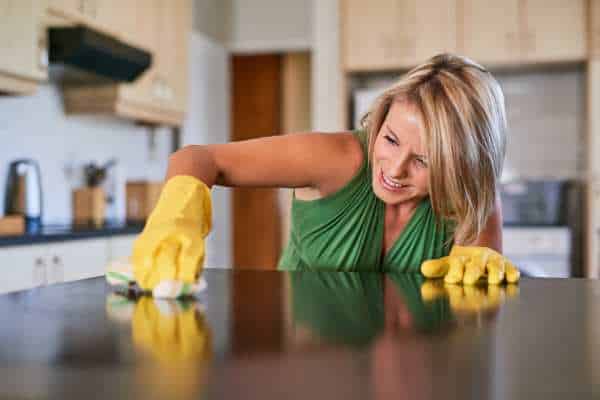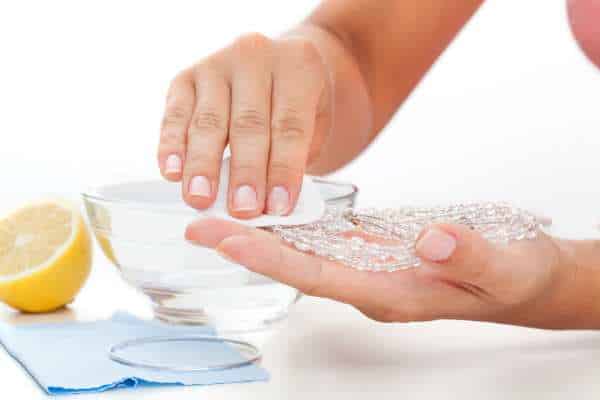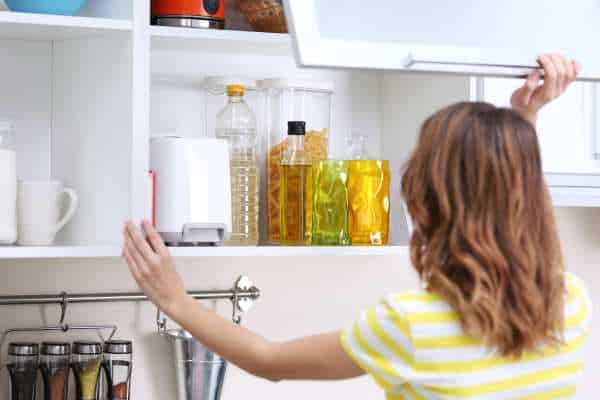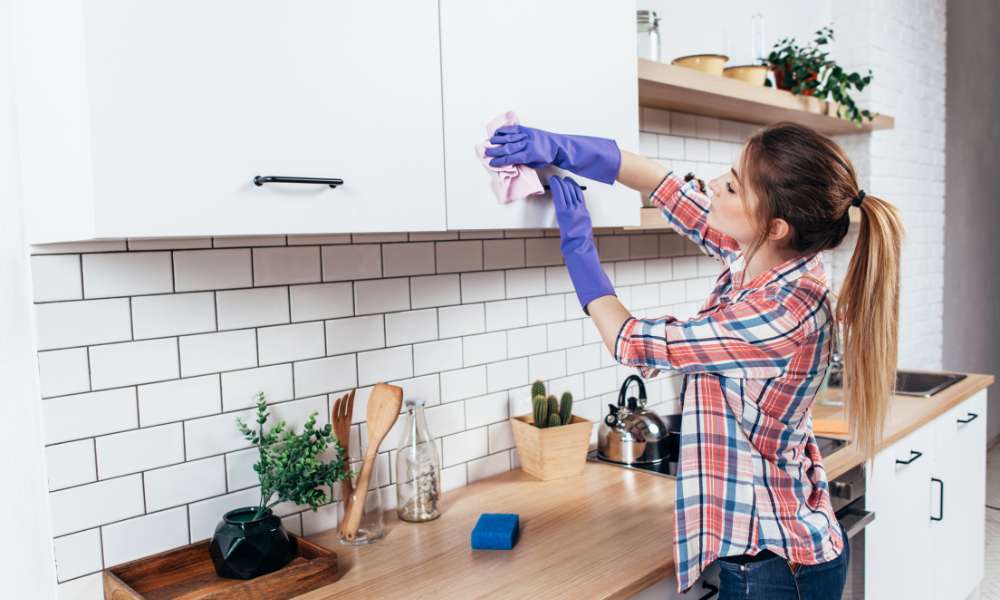Cleaning wood cabinets in the kitchen is an essential task that not only maintains the aesthetic appeal of your cooking space but also ensures the longevity and durability of the cabinets. Learning how to clean wood cabinets in the kitchen effectively is crucial for removing grease, dust, and stains that inevitably accumulate over time. This guide aims to provide you with simple yet efficient techniques to achieve sparkling clean wood cabinets, enhancing the overall look and feel of your kitchen. By incorporating the practice of regular cleaning into your routine, you can protect your investment and create a healthier environment for your family. With the right approach, cleaning your wood kitchen cabinets can be both easy and rewarding, ensuring they remain a beautiful and functional part of your home for years to come.
What Is The Best Cleaner For Wood Cabinets?

You can also use a commercial wood cabinet cleaner that is specifically formulated for wooden surfaces. These cleaners are designed to nourish and protect the wood while effectively cleaning away dirt and residue. It is important to always follow the manufacturer’s instructions when using any cleaning product on your wood cabinets to ensure opimal results and prevent any damage.
How Often Should I Clean My Wood Cabinets In The Kitchen?

It is recommended to clean your wood cabinets in the kitchen on a regular basis to maintain their appearance and extend their lifespan. A general guideline is to wipe down the cabinets with a soft cloth dampened with a mild soap and water solution once a week. This will help remove any grease, dust, or food particles that may have accumulated.
Addressing Built-Up Grime
Built-up grime on wood cabinets is more than just an eyesore; it’s a haven for bacteria and allergens. Start by making a cleaning solution of warm water and a gentle dish soap. Apply this solution with a soft cloth, gently rubbing in a circular motion to break down the grease and dirt. For stubborn areas, you might consider a mixture of baking soda and water to create a mild abrasive paste. This can be particularly effective for tough spots, but be sure to test it on an inconspicuous area first to ensure it doesn’t damage the finish.
Wiping Down Cabinet Exteriors
Once you’ve addressed the grime, take another clean, soft cloth and dampen it with just water. Wipe down the entire exterior of the chiffonier to remove any soap residue. This step is crucial for maintaining the natural beauty of the wood and preventing any damage that soap build-up might cause over time. Ensure you cover all areas, including handles and edges where grease and dust are likely to accumulate.
Using A Damp Cloth To Rinse
After wiping down the cabinets with your soap solution and addressing any specific areas of built-up grime, it’s important to rinse them with a clean, damp cloth. This step removes any remaining cleaning solution and residue. Follow up with a dry towel to wipe down the chiffonier, preventing any water from soaking in and damaging the wood. This process not only cleans but also helps to preserve the wood, ensuring your chiffonier maintains their integrity and appearance for longer.
Dealing With Stubborn Stains

Maintaining the pristine condition of wood cabinets in the kitchen requires tackling various stubborn stains that can mar their beauty. Understanding how to address these common issues not only enhances the appearance of your kitchen but also preserves the wood, ensuring its longevity.
1. Grease Stains
Grease stains are a common nemesis in the kitchen, resulting from cooking vapors and splatters. To effectively clean these, start by creating a mixture of mild dish soap and warm water. Dip a soft cloth into the solution, wring it out to avoid excess moisture, and gently wipe the chiffonier. For more stubborn grease stains, a solution of vinegar and water can be used as a natural degreaser. Apply the solution with a soft cloth, gently rubbing the stained areas. Rinse with a damp cloth and dry immediately with a clean, dry towel to prevent any water damage.
2. Watermarks
Watermarks, often left by damp dishes or steam, can dull the appearance of wood cabinets. To remove these marks, you can use a soft cloth dipped in a mixture of olive oil and vinegar. The oil helps to moisturize the wood, while the vinegar works to lift the watermarks. Gently rub the solution over the marks in the direction of the wood grain, and then buff with a dry cloth until the shine is restored. For persistent watermarks, applying a small amount of toothpaste on a soft cloth and rubbing it gently over the affected area can also be effective. Wipe clean with a damp cloth and dry thoroughly.
3. Scratches And Dents
Scratches and dents can detract from the overall look of your kitchen cabinets. To minimize their appearance, you can use a wood filler or putty that matches the color of your chiffonier. Apply the filler according to the product’s instructions and sand it down smoothly once dry. For minor scratches, a mixture of lemon juice and olive oil applied with a soft cloth can help to camouflage the damage. Rub the mixture over the scratch in the direction of the grain, then buff with a clean cloth. Additionally, using a touch-up pen or crayon designed for wood furniture is an easy fix for small scratches and dents, blending them into the surrounding area.
Alternative Cleaning Methods

1. Baking Soda Paste
A gentle yet effective method for removing stubborn stains from wood cabinets is using a baking soda paste. This natural cleaner is particularly useful for tackling grime that regular cleaners can’t remove. To create the paste, mix equal parts baking soda and water until you achieve a thick consistency. Apply this paste directly to the stained areas of your wood cabinets, using a soft cloth or a non-abrasive sponge. Gently rub in a circular motion, then wipe clean with a damp cloth. This method is safe for all types of wood chiffonier, ensuring thorough cleaning without damaging the surface.
2. Lemon And Olive Oil Solution
For a natural polish and cleaner, a mixture of lemon juice and olive oil can be used to both clean and condition wood cabinets, bringing out their natural shine. Combine one part lemon juice with two parts olive oil in a bowl. Apply the solution to the cabinets with a soft cloth, rubbing in the direction of the grain to nourish the wood and give it a fresh, clean appearance. This solution not only cleans your chiffonier but also leaves behind a pleasant scent and a protective layer that helps repel dust and dirt.
Returning Cleaned Hardware To Cabinets

After thoroughly cleaning the hardware from your cabinets, it is essential to return them thoughtfully and purposefully. Start by ensuring that each piece is completely dry before reattaching them to prevent any moisture damage. When placing the hardware back onto the chiffoniers, take care to align them properly with their respective screw holes. This attention to detail ensures a seamless fit and prevents any potential issues down the line.
Diy Alternatives For Eco-Conscious Cleaning
One effective DIY alternative for eco-conscious cleaning when dealing with cockroaches in kitchen cabinets is using a mixture of baking soda and sugar. These common household ingredients work together to attract the roaches with the sugar, while the baking soda disrupts their digestive system when ingested. This natural remedy is safe for your family and pets, unlike harsh chemical pesticides.
Buffing Cabinets To A Shine
Buffing cabinets to a brilliant shine can transform the entire look of your kitchen. Start by thoroughly cleaning the cabinets with a gentle wood cleaner to remove any built-up grease and grime. Once clean, apply a high-quality wood polish using a soft, lint-free cloth in circular motions for an even application. For a professional finish, consider using a buffer machine with a soft buffing pad to achieve that perfect gleam.
The Final Thought
Properly cleaning wood cabinets in the kitchen is essential to maintain their beauty and longevity. By following the steps outlined in this article, you can effectively remove dirt, grime, and grease from your cabinets without damaging the wood finish. Regular maintenance and gentle cleaning techniques will ensure that your chiffonier remain in top condition for years to come. Remember to use mild cleaners, avoid abrasive materials, and always test products in an inconspicuous area before applying them to the entire surface. With these tips in mind, you can keep your chiffonier looking pristine and well-maintained. Start implementing these practices today for a kitchen that shines with cleanliness and elegance.

